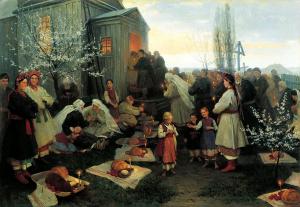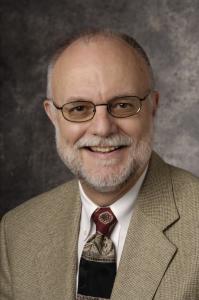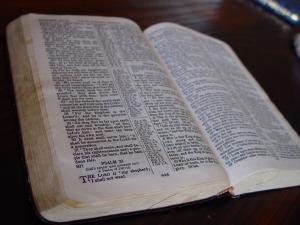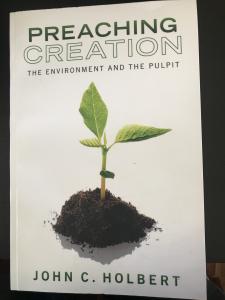(Lectionary for April 1, 2018)
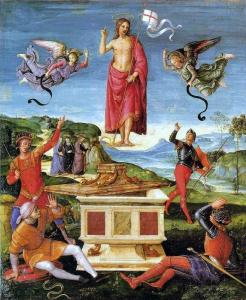 Last week my Hebrew Bible self wandered over to the New Testament to comment on the Markan story of Jesus’ immortal donkey ride into Jerusalem. Now today I have some thoughts about Mark’s amazingly brilliant and astonishingly odd account of the resurrection of Jesus. Let me be clear: I do not, and probably never have, believed in the historical reality of the resurrection of the crucified Jesus. The magical resuscitation of a corpse in real history is simply absurd. Yet, I affirm wholeheartedly Paul’s anguished demand that “lest Christ has been raised, your faith is vain and your preaching is vain.” The narrative of the resurrection of Jesus of Nazareth remains for me the world’s most important story, but it remains just that—a story. Like the tales of the Garden of Eden, the patriarchal story of Jacob bamboozling Esau, and the event at the Sea of Reeds in the Hebrew Bible, the account of Jesus’ resurrection is the stuff of mythology.
Last week my Hebrew Bible self wandered over to the New Testament to comment on the Markan story of Jesus’ immortal donkey ride into Jerusalem. Now today I have some thoughts about Mark’s amazingly brilliant and astonishingly odd account of the resurrection of Jesus. Let me be clear: I do not, and probably never have, believed in the historical reality of the resurrection of the crucified Jesus. The magical resuscitation of a corpse in real history is simply absurd. Yet, I affirm wholeheartedly Paul’s anguished demand that “lest Christ has been raised, your faith is vain and your preaching is vain.” The narrative of the resurrection of Jesus of Nazareth remains for me the world’s most important story, but it remains just that—a story. Like the tales of the Garden of Eden, the patriarchal story of Jacob bamboozling Esau, and the event at the Sea of Reeds in the Hebrew Bible, the account of Jesus’ resurrection is the stuff of mythology.
We live our lives on the stuff of mythology. After all, as it has long been said, “History is true once, while the greatest of myths are true forever.” I cling to this magnificent story, because I believe that it contains within it the hope for my life, the future of a restored humanity, the certainty that our mortal death is hardly the end of the work of the God of justice. So, on Easter, I long to hear the story itself. I do not seek to have that story explained or parsed, or proven by tricks of the historian’s art, however learned, however footnoted. S.M. Wright’s 1000 page apologia for a historical resurrection as the bedrock of Christian belief is fully and completely unpersuasive to me. I want the story, because it is that story that counts. And so here it is.
After the horrors of the crucifixion of their beloved Jesus, witnessed only by the women who faithfully followed him, most especially Mary Magdalene, Jesus’s own mother, the mother of his brother, James, and Salome (is she the one who danced for the head of John the Baptist?), and after his complete desertion by those men who had claimed to be willing to go to death with him, especially Peter, the three named women collected spices with which to anoint his shattered body for a proper burial. Carrying those aromatic jars, they headed toward the tomb on the first day of the week, just as the sun was rising.
As they walked in deep sorrow toward the resting place of the one they had so unreservedly loved, they suddenly realized that they had forgotten about an enormous problem that would prevent them from completing their task of anointing; there was that huge stone that the authorities had rolled across the mouth of the tomb. How can we ever push that enormous rock aside in order to reach his body, they said? But when they got there, that stone had already been rolled back by someone far stronger than they.
They rushed into the now open tomb, but rather than the body of Jesus they saw a young man, dressed in a white robe, sitting on the right side of the slab on which they had thought to see Jesus. They were shocked and horrified! But the young man spoke to them. “Do not be shocked! You are looking for Jesus of Nazareth, the crucified one. He has been raised; he is not here. Look right here at the spot where they laid him. So, go right now and tell his disciples, and most especially Peter, that poor man who denied his master three times by that Jerusalem fire, that Jesus is going ahead of you into Galilee. You will see him there just as he told you.”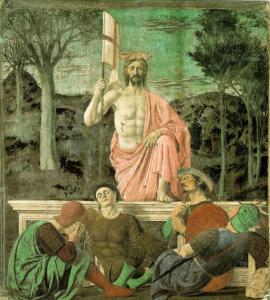
But the women, in a state of astonishment and bewilderment and abject terror, rushed out of the tomb much faster than they had run into it, and said precisely nothing to anyone, surely not the disciples, surely not Peter, because they were traumatized and thoroughly horrified by the empty tomb, the young white robed man, the missing body of Jesus, the claim that their Jesus was somehow alive and on the move to Galilee where his ministry had begun, and most particularly by the man’s demand that they tell everyone they meet about all this. They had been struck mute by it, and actually, who can blame them? The central affirmation and certainty of the world, that thing we all face sooner or later, the fact of our own death, has been here in this story called into complete question. In the power of the God of life, death is finally not the end for any of us. As Frederick Buechner said so magnificently in his magisterial novel, Godric, “All the death there is, set next to life, would scarcely fill a cup.” Exactly!
This Easter story is my story, and it is your story. And because that is so, there is a problem that Mark leaves all of us with. Because the women said exactly nothing about any of this, someone better start talking. And that someone is you, and that someone is me. This story must become the world’s story, a tale of life and hope and wonder that transforms and transfigures the lives of every human being. Jesus is alive and active as are all those who have kept this story alive: Martin Luther King, Jr., Mohandas Gandhi, Dietrich Bonhoeffer, Reinhold Niebuhr, and a host of others far less well known but no less witnesses to the story. It is the story of us all! And so, Happy Easter! The last word of God is life now and forever. Here we find the real never ending story that can direct our living and our dying in joy and hope.
(Images from Wikimedia Commons)
